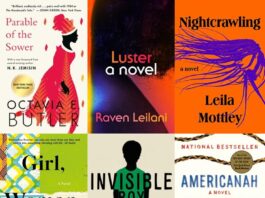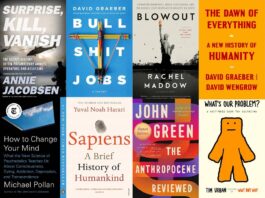In a changing world, the method and approach of educating younger generations must evolve with society. In British Columbia, the previous kindergarten to grade 12 curriculum needed to be updated in order to be relevant for today’s students, equipping them with the skills needed to succeed. After three years of trial implementation in schools and feedback from educators, British Columbia’s re-designed curriculum was implemented for grades K–9 in the 2016/17 school year, with the remaining grades to be completed by September of 2018.
Although still in the developmental stage, British Columbia’s new curriculum is centred on the concept of “personalized learning.” That is to say, it is a method of teaching that focuses on the passions of each individual student, with the intention of helping such an interest grow. This method bears a stark resemblance to previous approaches known as “inquiry-based” or “discovery-based” learning. There is still skepticism from some in the field as to whether such an approach reaps any sort of benefit to the student.
In a paper published in Educational Psychologist in 2006, Richard Clark and his associates discussed why minimal guidance in instruction does not work.
“Not only is unguided instruction normally less effective, there is also evidence that it may have negative results when students acquire misconceptions or incomplete or disorganized knowledge,” said Clark.
In the paper “Should There Be a Three Strikes Rule Against Pure Discovery Learning?” published in American Psychologist, author Richard Mayer poses the concern that with too much freedom, students will fail to connect and come into contact with the necessary learned material.
“There is nothing magical to ensure that simply working on a problem or simply discussing a problem will lead to discovering its solution,” Mayer wrote. “If the learner fails to come into contact with the to-be-learned material, no amount of activity or discussion will be able to help the learner make sense of it.”
The main problem is a lack of motivation which prevents students from engaging. This is Daniel Edelson’s thought. He hails from Northwestern University and his paper addresses the challenges involved in inquiry-based learning. That said, personalized learning appears, at least in theory, to address such problems by placing the focus on individualized student interest.
In an interview with the Vancouver Sun, former B.C. education minister Mike Bernier stated: “Personalized learning is at the heart of the changes — and teachers will have the time and ability to help kids dig into what interests them. We all know how passionate kids can be when they get into something like music, soccer, or dinosaurs. The new curriculum will give teachers the ability to tap into these passions.”
This flexibility is largely due to the new curriculum model composed of three key aspects: content, curricular competencies, and big ideas.
Content refers to what information students will learn, and which course topics will be addressed. It is pertinent that teachers follow the content learning standards to assure their students know essential concepts specific to each subject.
Curricular competencies are the necessary skills, strategies, and processes of what students will apply on a daily basis. They are divided into “core competencies” which include thinking, communication, and personal and social skills that aim to create awareness and responsibility.
Finally, the element of big ideas consists of generalizations and principles, as well as key concepts in the area of learning. This element represents what students will know by the end of their curriculum in each grade. As a result, emphasis is placed largely on the deeper purpose of why select information is being taught. For example, rather than memorizing precise facts about WWII, students will focus on the larger social and economic impacts war brings to a country. It raises the question: What material is truly essential at each grade level?
Each of the core elements of the curriculum model is applied in conjunction with traditional numeracy and literacy foundations, as well as a more recent focus on Aboriginal perspectives and knowledge. In other words, the ability to write a fluent essay or perform basic math skills will still be a top priority. Additionally, the new adaptations allow teachers increased choice in how they want to address the information, particularly in terms of the classroom environment they wish to create. Units can be adapted to suit the student interest, so long as the big ideas of the course are being delivered.
As a result of the new curriculum flexibility, schools are experiencing a natural redesign of their classroom environments. As Vera Sutton, an English teacher in Langley who received her MA at Simon Fraser University explained, the contents of the courses haven’t changed, so much as the method of imparting information.
“In grade 10 we’ve offered six choices, and [students] have to take minimum two of them… the delivery is different as opposed to the content. They still have to write essays, a narrative; they still need to engage with literature… they have to do the same things, but the vehicle they are getting into is a bit different,” Sutton stated.
Justifiably, with the rapid evolution of society, the spotlight has shifted to a greater focus on technology and immersive learning. This redesign assures that the education system remains relevant for future generations, particularly within the booming tech industry.
Yet nothing is without cost. In a recent release on the B.C. government website, the government states it’s dedicating $6 million to professional development days and the purchasing of new technology, such as iPads. Furthermore, in a report by CBC News, it was estimated that the government will be spending $100 million on time [sic] over the multiple years of the curriculum roll-out for teacher training. Part of this training will be dedicated to showing teachers how to properly implement coding into the classroom.
“By 2018, every student will experience basic coding between grades six and nine,” stated the B.C. Ministry of Education in a news release.
Despite being such a large investment, the influx of technology will open doors for immersive learning to flourish. In a comparison of old to new curricula done by Langley School District 35, the idea of creating a global classroom is evident. Rather than the traditional setup with a teacher lecturing, the chart compares how in the new curriculum, “learning happens anywhere in spaces where surroundings are part of the learning experiences.”
This can arrive in the form of field trips into the community, guest speakers (such as Indigenous educators and elders), and practical applications of projects in society. There are various project outlines available on the “Instructional Samples” section on the ministry website, with a plethora of new focuses such as: mindful breathing and meditation in grades K-3 or organ donation in health sciences. One such example is the “Watering System for School Garden” for grade 9 students highlighted below:
Watering System for School Garden.
Subject: Applied Design, Skills, and Technologies.
This short exercise introduces teachers and students to design thinking. Students are challenged to design a watering system for a school garden that can be sustained with minimal human intervention during summer break. Students will gain an understanding of the needs of various stakeholder groups through empathic interviewing.
Evidently, the curriculum has adapted to serve as a foundation for basic life skills as well as academic concepts. In an interview with Nadine Luteijn, an Aldergrove high school counsellor and teacher, she explained how career discussion is starting at kindergarten.
“I love the fact that career discussion is starting as early as kindergarten… with starting in elementary years there’s really awareness… I hope that it’s not us putting more pressure… but awareness, explore, see what’s a good fit,” Luteijn stated.
As she described, there are three stages of the inquiry process (awareness, exploration, and experience) that students are encouraged to follow through grades K-12. That said, this is not to suggest that children are expected to know and choose a select career path. Rather, it is an expression of interest that they pursue until graduation.
“We didn’t want students focused on just career. We want it focused on life,” said Luteijn, emphasizing how teachers chose Career Life Education.
Finally, this unique sensitivity for student mindsets raises questions of how traditional assessment methods will be evolving as well.
With this new approach, the name “Career Life Education” has been given to what was previously the Planning 10 course. The goal is that they will find an area of interest and then explore this subject through the grade 10, 11, and 12 years of study.
“The hope is that students come up with some sort of inquiry question, something they’re interested in and want to learn more in each of their courses…so it could be a research project, a volunteer project, or exploring and interviewing people in a career field,” Luteijn stated.
According to the Globe and Mail, Bernier said, “[R]egular report cards with letter grades assessing student achievement will remain integral parts of the new curriculum.”
Despite major changes of perspective among many teachers with the arrival of the curriculum, the issue of assessment methods remains controversial. The big questions remain: Is a percentage grade truly an accurate reflection of a student’s skill? Are standardized tests beneficial or harmful to the learning environment? And should post-secondary entry requirements be dictated by such tests?
As reported by CBC News, the province has included hundreds of teachers and parents in consultation over the past three years, asking for their ideas. As a result, the majority opinion seems clear; with failing numeracy and literacy skills on the rise, something needs to change. These developments have begun to arrive in steps, albeit slowly.
“We just don’t want to be in a situation where with all the changes to the curriculum at the same time, we don’t add another layer of complexity,” said Glen Hansman, the president of the B.C. Teachers’ Federation.
Thus far, B.C. has seen an elimination of the grades 10 and 11 provincial examinations, and percentage-based grades on report cards for grade 9 students. In their places, the arrival of two new numeracy and literacy examinations have been introduced and are available for viewing on the B.C. Ministry of Education website.
Luteijn explained that the new literacy and numeracy tests are not meant to be tied to a course percentage. Instead, she described them as an evaluation of practical skills that every student should be equipped with.
Curious about their applicability, I took the sample numeracy exam provided online and experienced first-hand the types of questions students would be presented with. I found the questions to be relevant and interesting; they are presented in a word problem format with a large inclusion of Aboriginal principles and traditions.
For example, the questions ranged from calculating water consumption in a household, financing a small company, calculating the burn rate and probability of a wildfire, to even drafting and measuring the dimensions of an Indigenous pit-house.
The renewal of this form of standardized testing not only relieves anxiety for students but allows courses that were previously tied to a provincial exam more time and freedom to expand, particularly in the subject area of social studies. That said, with these changes in evaluation, concerns of time and post-secondary entrance requirements have risen.
One of the major concerns for teachers during the roll-out period is the inaccuracy of the implementation dates, which results in little course preparation time and ill-prepared classroom funding. In a recent letter from current B.C. Education Minister Rob Fleming addressed to the public, he stated that the schedule for the grades 11 and 12 curriculum will be pushed an additional year to September of 2019.
Stephen Kaita is a student teacher, completing his practicum through SFU. He sees the benefits for new teachers entering the field.
“It’s important to have a growth mindset,” he said. “There is always going to be a need for more preparation, to articulate what the new curriculum can become.”
A secondary benefit of the schedule push is the finalization of what effect new courses will have on post-secondary admittance. In the example of the English First Peoples 12 course, the First Nations Education Steering Committee has already established that the course fulfills the language arts graduation requirement, and a large list of Canadian universities which have recognized the course are available for viewing on their website. Not only will this time allow more universities to join that list, but it will also let them address the new credentials the literacy and numeracy exams will bring; hopefully with positive outcomes.
With the roll-out period expected to continue well into 2021, B.C. will experience many new changes and challenges through the implementation process. As Judy Halbert and Linda Kaser point out in a study published in the European Journal of Education, in which multiple schools were observed in response to the new curriculum, “The staff is now much more able to focus on improving the literacy and numeracy levels of their learners. The school is now a place of joy and learning, instead of stress and worry.”
If the new curriculum is to succeed, careful observation and adjustment will be required throughout the roll-out period and beyond to assure its quality. Although unforeseen challenges linger on the horizon, British Columbia’s K-12 curriculum will undoubtedly play a positive role in shaping future generations of Canadians.




